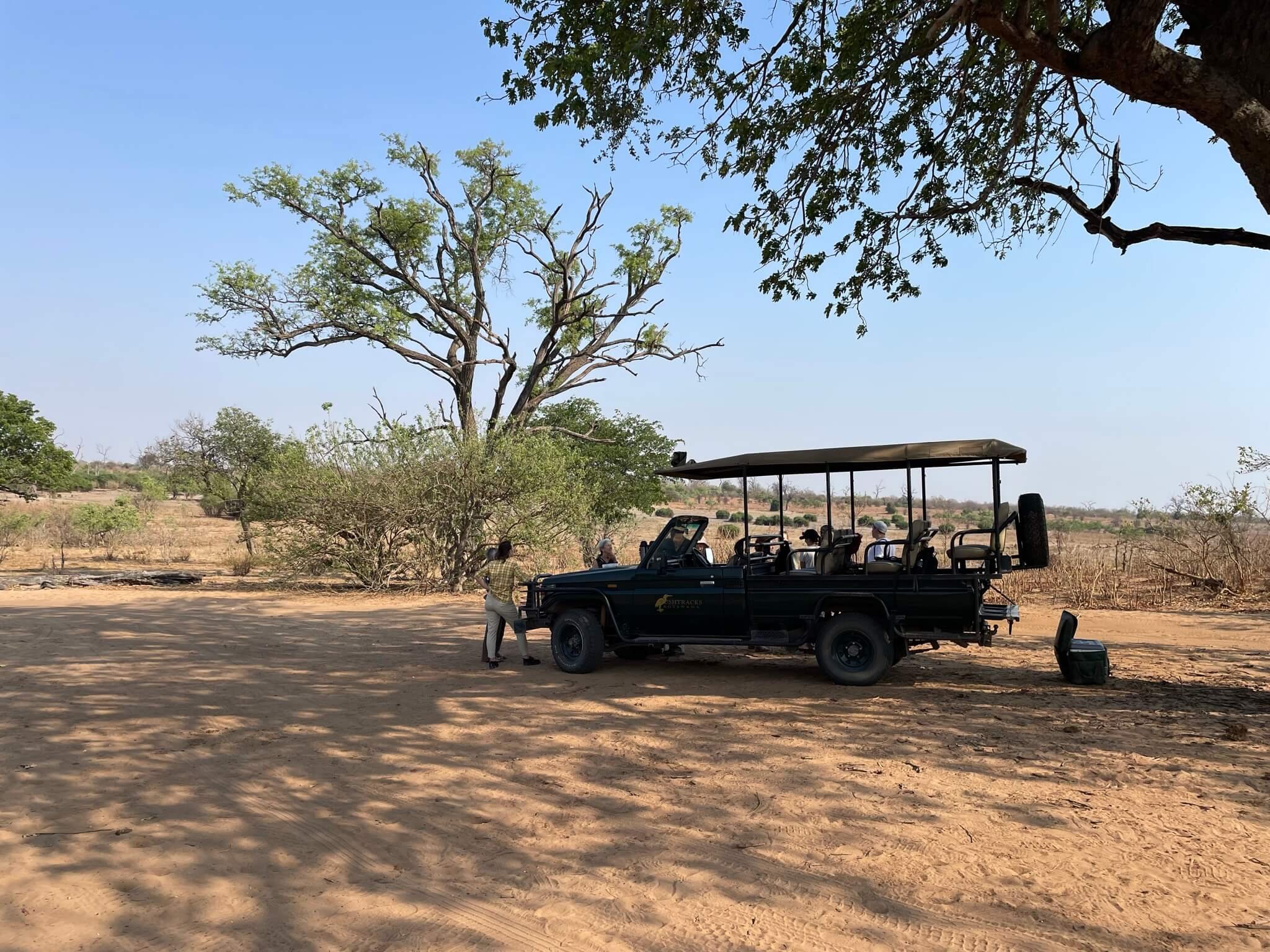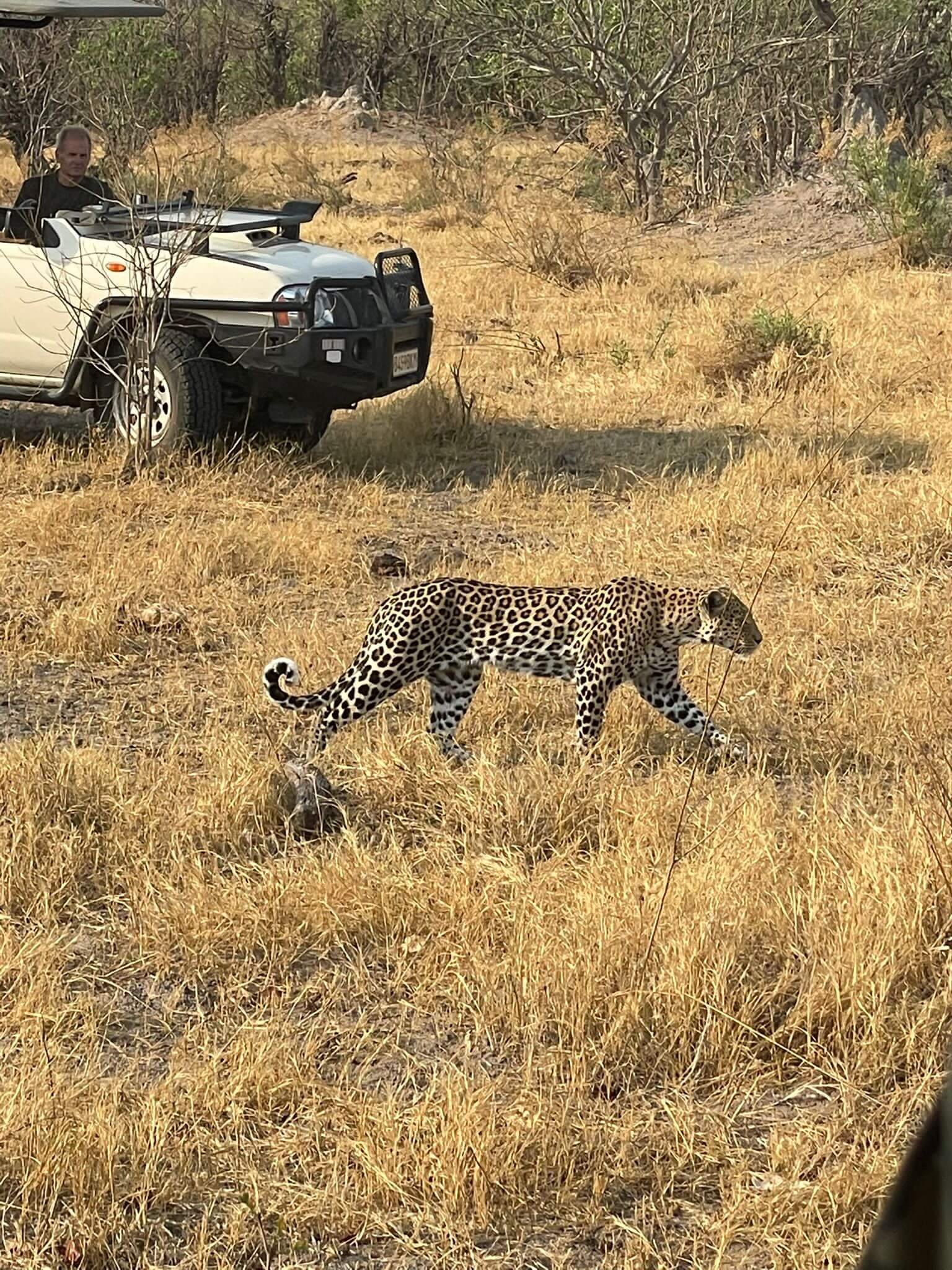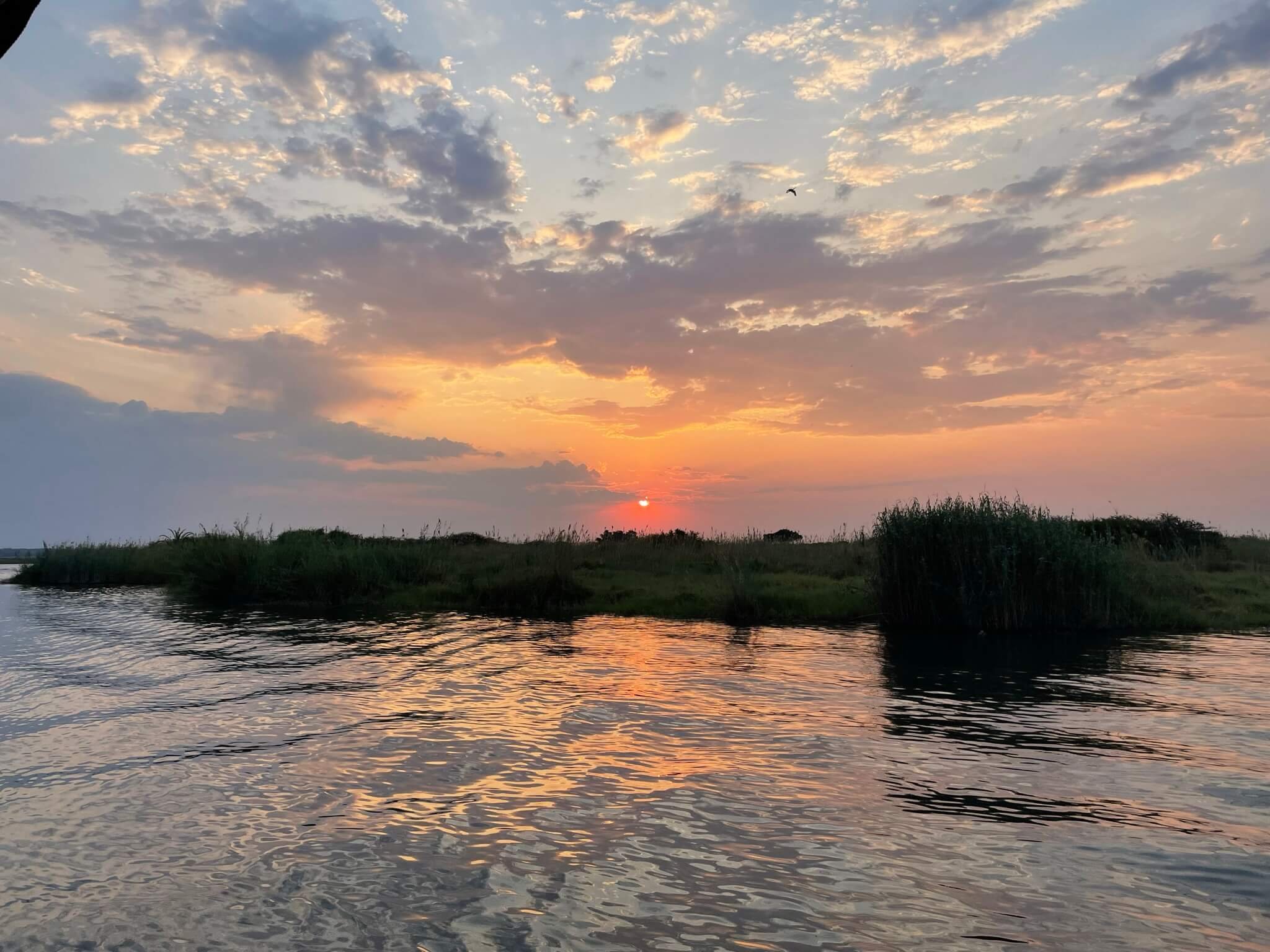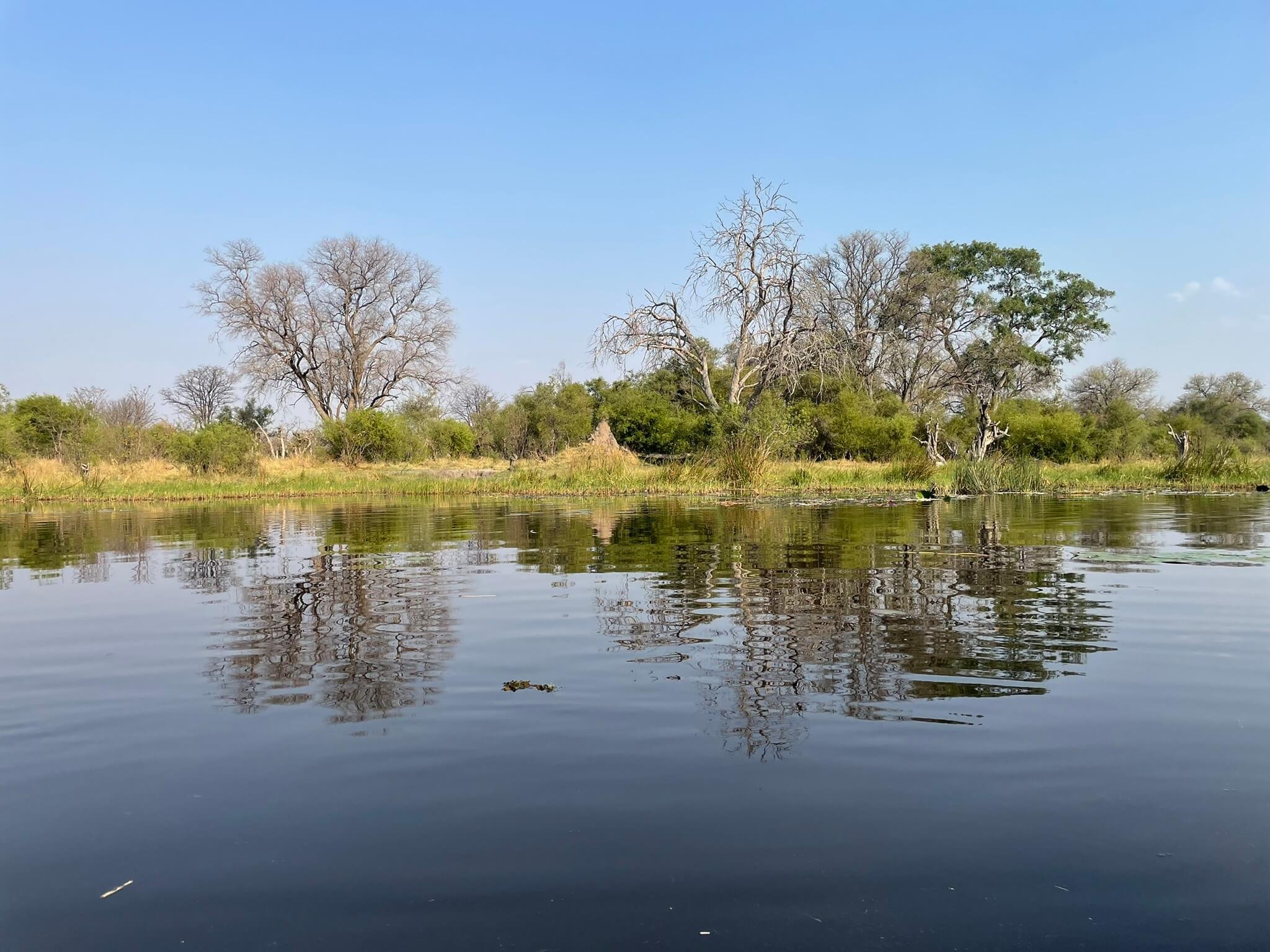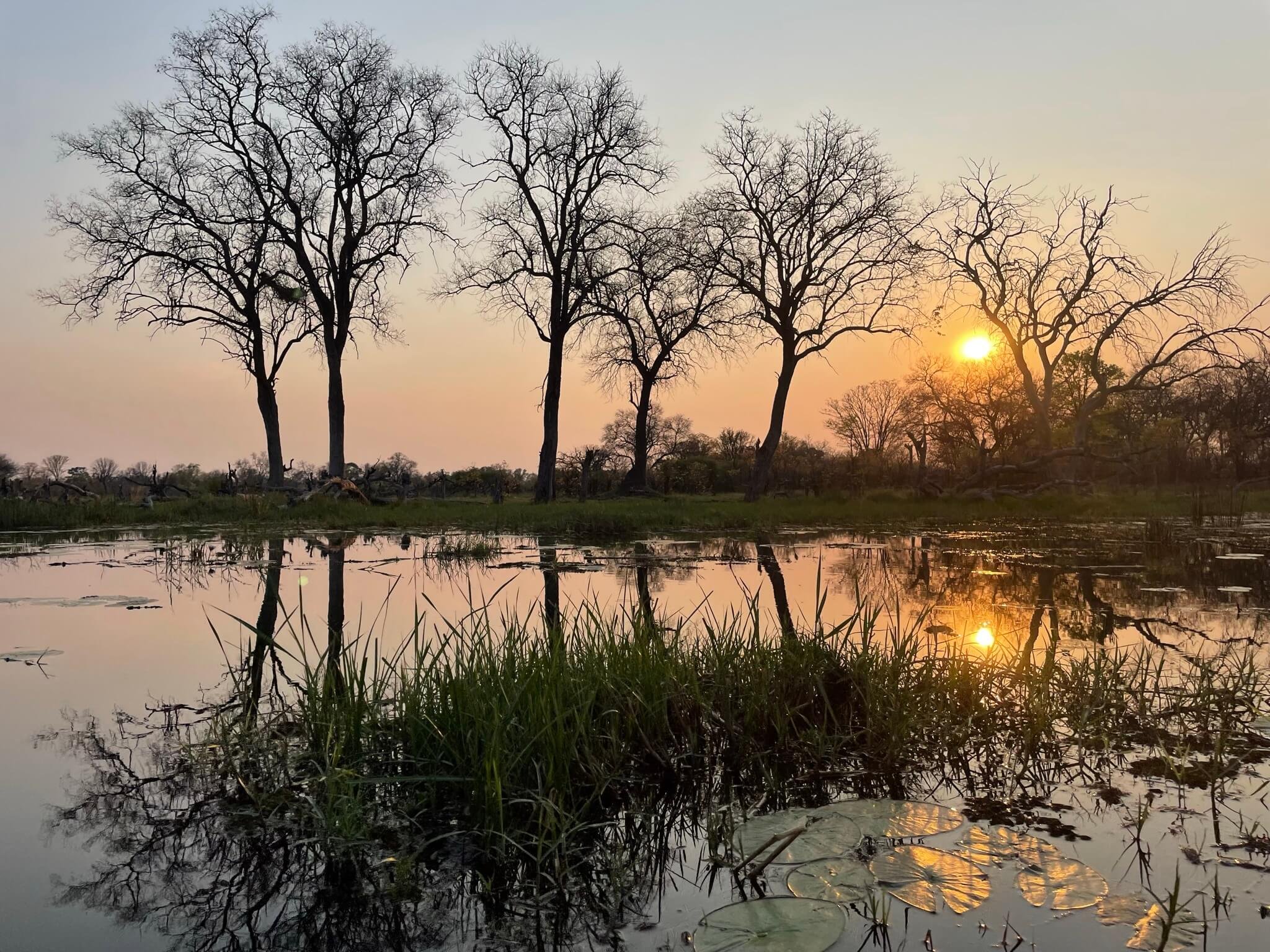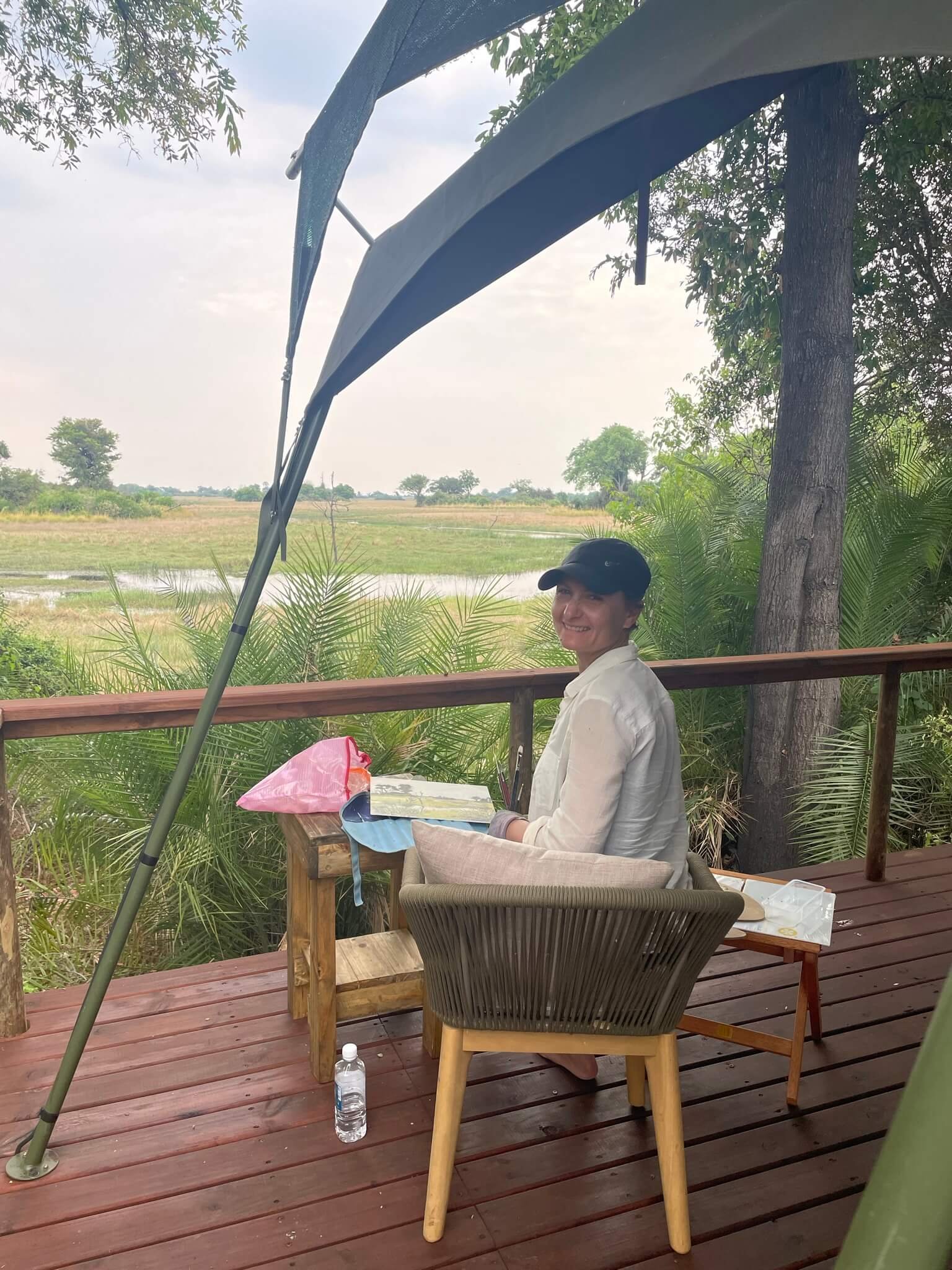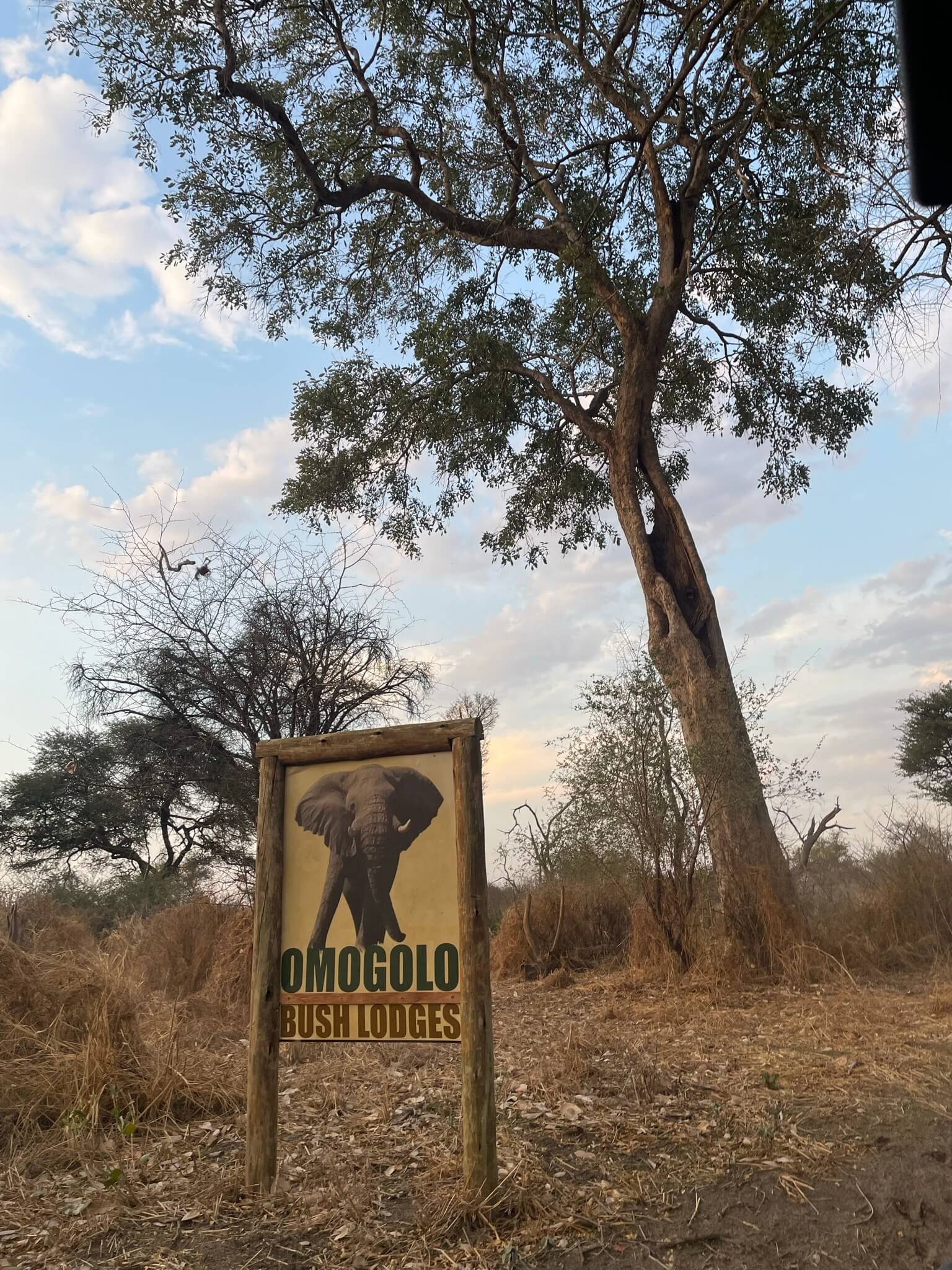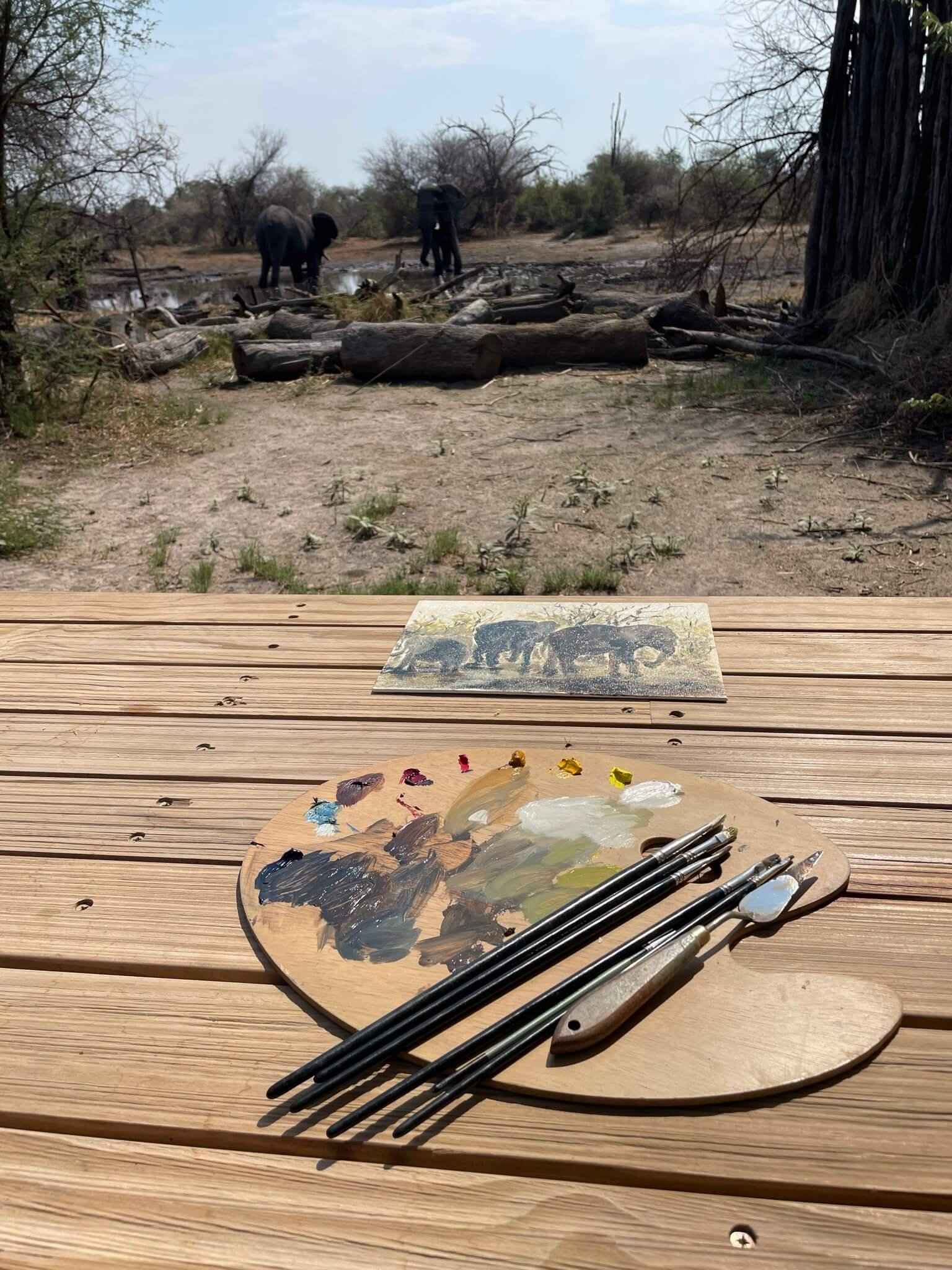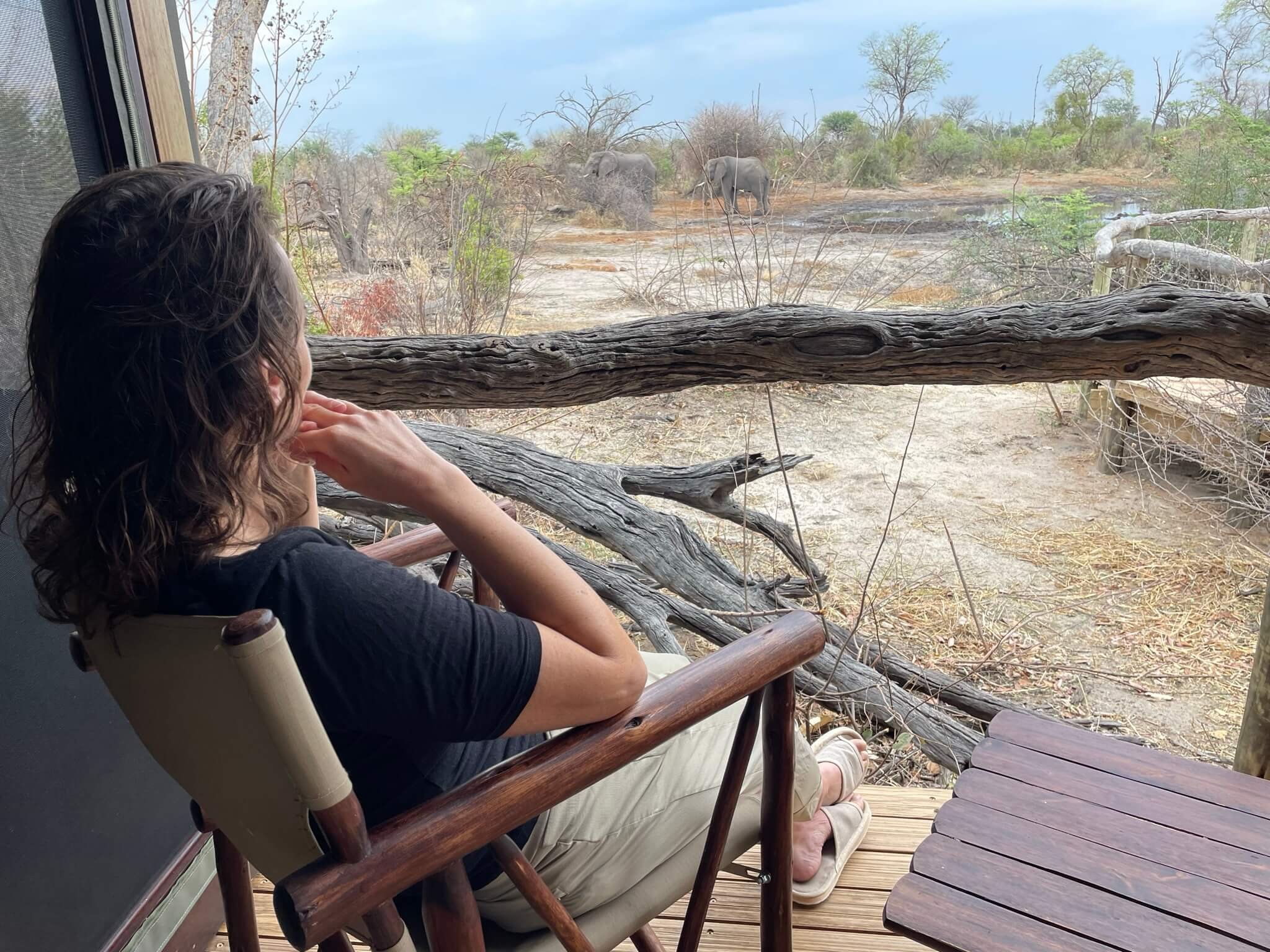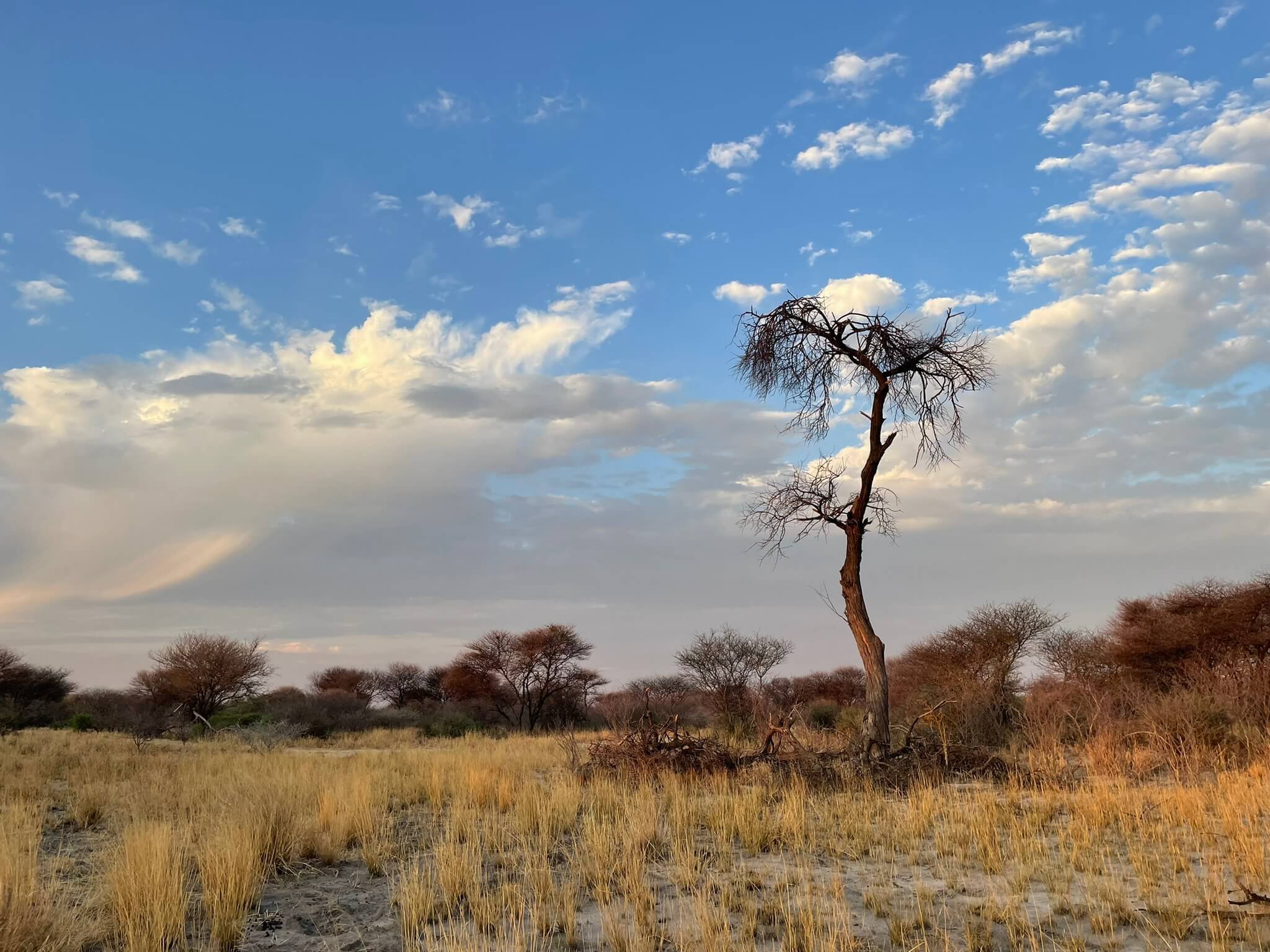My Top 10 Lessons Learned going on a Painting Safari
October was a busy month – my sister, aunt, uncle, godmother and her best friend arrived in Cape Town from the USA for an extended visit, and the first group activity was a two-week safari to Botswana!
First day on Safari in Chobe Game Reserve
I debated (to be fair, it should never have been a debate!) whether to bring my oil paints. A couple of caring friends were absolutely adamant that I would want to paint the beauty I would encounter (I hadn’t been to Botswana before), so at the last minute I bought some small canvas boards and took a skinnied-down set of paints and brushes.
What follows are my Top 10 Lessons Learned from painting – with oils – while traveling in the Botswana bush. To give you a bit of context, we were packing up and unpacking frequently (2 nights in each place over 12 days) and we had strict weight limits and baggage size constraints!
1. Don’t think you won’t want to paint!
I found that with downtime came the immediate desire to paint, and on a safari holiday, there is usually quite a bit of downtime in the mid/late morning and afternoon, in between game drives and group activities… I would have felt quite sorry for myself (and very frustrated!) had I not had the option to paint. In the end I painted once in every stop on our itinerary.
The set-up
2. Know your preferences, but factor in the constraints of travel
I know myself… I love to paint big (or to feel like I have the room to be free when I am painting)… I also know I like a smoother surface if I’m painting on canvas. As I only committed to painting a day before we left, I was rushing when I purchased 8 small canvas boards (all were A4 size or smaller). I wished I had brought larger supports and also that I had bought a brand with a finer weave. I found I was “fighting” against the rougher weave. However, in the end my choice to bring smaller panels did make sense. 1. They are very light. And 2. I could fit them in my bag, which saved a lot of complications, considering the amount of moving around we did!
On a Makoro in the Okavango Delta
3. Bring more supports (boards/canvases) than you think you will need
I found myself rationing what I had from the very start, as I could tell pretty quickly that I’d want to paint a lot. In the end, it was just enough, but the feeling throughout the trip was to ration… I prefer and recommend a feeling of abundance while painting, so bring more supports than you think you'll use! Also, my sister joined me in my painting, which was fantastic! Bring extra supports so you can invite company! (She discovered, by the way, the pure joy of being still in nature, and how deeply fulfilling it can be, painting the beauty before you, from life.)
4. Bring small/journal-size sketchbooks
My friend Beth Lowe gave me the excellent advice to bring small sketchbooks along, and to have pencils, pens and watercolour paints with me at all times. I wish I had heeded her advice! There were many occasions when I just wanted to capture the arc of a branch, the blossoms of a flowering plant next to the river, fairy lights stretching between giant jungle trees, a warthog running to or from a watering hole… so many fleeting moments and beautiful scenes that I desperately wanted to draw or paint, but oil painting requires time to set up, and I didn’t have enough supports to feel confident in just playing around.
5. Use watercolours if you can!
If I was a watercolourist, I believe I would have been taking out my paints continually! Considering I was working in oils, I needed to have at least one hour, preferably more, for a painting session. This was quite limiting considering how much moving around we were doing, and all the group activities. Next time I plan to bring watercolours! I just need to learn how to use them first…!
6. Get your travel game down pat!
I have learnt how to set up and pack up quite quickly with my plein air experience in Cape Town. That came in very handy, as there were times when I didn’t have a lot of time, so setting up quickly and being able to pack up equally fast enabled me to grab a bit of free time to paint, and spend as much of that time painting as possible.
Additionally, knowing what to do with wet oil on canvas is essential – I use the “wine cork” method, where I slice a cork into 4-5 rings, and then cut these in half, making half-moon shapes about 1-2cm thick. I then place these in the corners of the painting, and then tape another support (preferably of the same size) to it, trying to keep the corks securely in place by making the tape quite tight over the corners. This leaves enough space between the painted surface and the second support for the oil paint to dry, but to be protected. I also then put the “wrapped” painting into a larger plastic bag to prevent any paint from getting onto my clothes, as I was packing the paintings into my travel bag.
Now that I think about it, I really recommend bringing at least 2 of every size of support you pack, so that you can do this “wine cork” method of packing your panels safely together.
Paintings all packaged up
This is what the packed paintings look like with corks in the corners.
7. Bring just what you need, but don’t leave any favourites at home
I know my plein air setup quite well by this point. Thus it was quite intuitive to go through my normal plein air painting kit and pull out what I felt was essential. Some decisions I made before leaving that really helped me:
I bought a small hand-held palette – it could fit in my bag and made my life easier.
I didn’t bring an easel – it was too complicated to manoeuvre and bulky (it wouldn’t have fit in my travel bag). I was fine to paint just holding my panels on my lap (as was my sister). That was certainly one benefit of a smaller support.
I tried to limit the number of tubes of paint I brought. The one colour I wish I had brought was cadmium orange – this colour appeared in the sunrises and sunsets, and to my surprise, mixing cad red and cad yellow didn’t give me the same power as the cad orange would have. A good trick here would be to take half to ¾ empty tubes of paint, especially for cadmiums where I don’t use a lot as the pigment is so powerful. This will help with the overall weight of your supplies.
I brought my turps/oil cups (I filled the oil cup to the brim with linseed oil, and kept the turps cup empty – see the next item below for more on this) and also my gloves and palette knife – these are essentials!
I brought a range of paint brush sizes, and I only brought brushes I know I use frequently.
8. Solvents are overrated!
My sister and I had fun on our first day in Botswana seeking out a hardware store to buy turpentine. As any painter knows, traveling with a solvent that is flammable is a) illegal and b) dangerous to everybody. So I thought we would track some down in local towns as we went. Well, we did manage to find some (a kind store employee gave us about ½ a cup of turpentine from a large bottle he had), but it was absolutely not odourless, and it gave my sister and I headaches, even though we were painting outside! It is also important to dispose of the turpentine safely, adding another complication to using this solvent.
It also shocked me to realise that even when I use odourless turpentine, I am breathing in the fumes… I’ve known this for years, but I hadn’t really appreciated just what that meant. Smelling the toxic, pungent fumes in Botswana made me a) want to stop using it immediately (and from now on I will only use Gamsol – although I have heard this too is toxic!!) and b) experiment with only using linseed oil as my medium. My sister and I both found this absolutely fine, and I felt liberated knowing I didn’t “need” turpentine in order to paint, which has always been challenging when traveling and flying.
9. Painting opens up new opportunities
My sister and I were lucky enough to be invited to paint at a nearby lodge while near the River Khwai on the outskirts of Moremi Game Reserve. Our guide Jeremy generously offered to escort us to a hide (you have to be escorted! The walk to the hide, while short, was completely exposed to the animals), that overlooked the River Khwai and the savanna. It was very tricky to see, but in the far distance, almost fully camouflaged by the shade of some trees, was a male lion, and at one point my sister and I saw the lion and a lioness move amongst the trees. What an experience, painting this scene before us! Pure magic.
10. Wild animals make great models!
I was absolutely taken by the experience of staying at the Omogolo Bush Lodges where elephants come to the watering hole throughout the day, to drink, bathe, socialise… I had a clear view of the elephants from the lodge and found myself intrigued as to whether I could paint them! It was endlessly engaging and also really fun to paint a gesture, a foot position, a trunk position… but often the elephant would move before I had painted the full pose. I didn’t mind, as I was just exploring and having fun, but happily, as the day progressed, different elephants took on similar poses to ones half-painted, so I had a chance to complete poses I had started!
So, in summation, yes definitely paint while on safari! It was a wonderful way to connect with locals and other travellers, but most importantly to connect with the beautiful natural environment. And I had the added bonus of bonding with my sister! Let me know what you think of these suggestions, and what tips you have from your own travel experiences. I’d love to hear!
Kalahari morning sunrise
For anyone who is considering a trip to Botswana, this was our route: We were in the north around Kasane (just across the border from Victoria Falls – where we spent our first night) at Chobe Nature Reserve, then we were in the River Khwai area at Moremi Game Reserve, we were in the Delta, and we were also in the Kalahara. Our last 2 nights were at my friend Caroline’s Omogolo Bush Lodges not too far from Maun – her lodge has stunning thatched roof accommodation designed around natural elephant-frequented watering holes!
